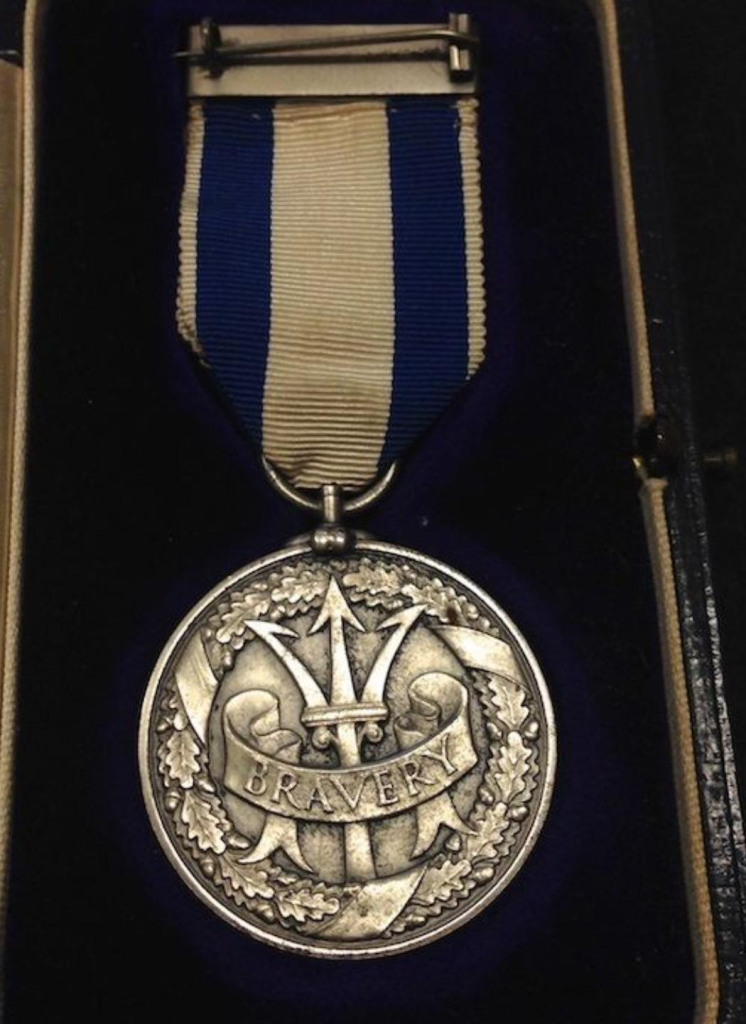By Paul Miller

The picture above shows one of four Lloyd’s Medal types bestowed by Lloyd’s of London.
In 1939, Lloyd’s set up a committee to find means of honouring seafarers who performed acts of exceptional courage at sea. This resulted in the announcement on 27 December 1940 of the “Lloyd’s War Medal for Bravery at Sea”.
One recipient of the medal was one of the Merchant Navy’s most decorated Second World War heroes, Master Mariner Douglas Crook. Along with the Lloyd’s Medal, he was also awarded the George Medal and was made an MBE for his part in the Battle of the Atlantic.
Mr. Crook was from Liverpool and a newly-married second navigating officer on the oil tanker Athel Knight. His ship was sunk at night by a U-boat which machine-gunned the survivors, killing two and wounding several others. Only two lifeboats managed to escape and Mr. Crook was in charge of one of them, with 33 crew members on board. He decided that the only chance of survival was to make for the nearest island – Antigua. It was 1,100 miles away.
All he had to navigate with was the lifeboat’s compass, an alarm clock and a pencil. The journey, sometimes under sail and occasionally using oars, took 38 days before land was sighted on the horizon. They went ashore just 60 miles south of their original destination in what was described as a triumph of navigation.
Mr. Crook was then posted to another oil tanker, the Scottish Heather, which was also sunk mid-Atlantic at night. After taking to a lifeboat he noticed that the tanker, although low in the water, was not sinking. He boarded the vessel and got a junior engineer to raise steam. Once successfully under way, they later found the other lifeboats occupied by the captain and first officer and their men.
When he returned to dry land, Mr. Crook was asked what he was thinking. He replied “I don’t want another long voyage in an open boat.”
Sent from my iPhone

